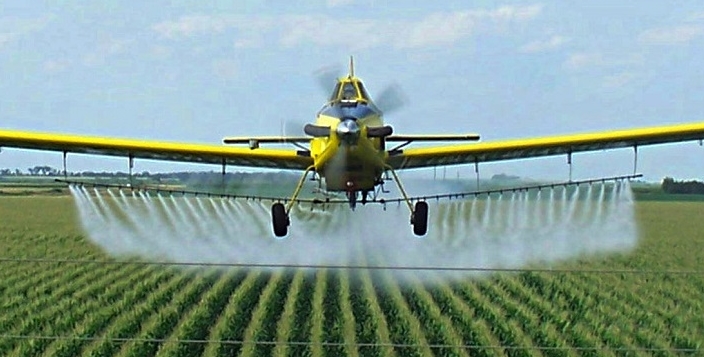Monsanto’s bad publicity is seemingly never-ending, and rightfully so as the biotech giant has worked hard to earn the title of the “World’s Most Evil Corporation.”
The death and destruction brought on by Monsanto over the years has not gone unnoticed, offending even some of their closest allies.
One of the most recent partners to distance themselves from Monsanto is the American Academy of Pediatrics, an organization dedicated to protecting children’s health.
AAP’s split from Monsanto seems like a no-brainer; however, it may not have happened it if wasn’t for food activists and Mom bloggers, reports EchoWatch.
AAP made its decision to sever ties with Monsanto after Mamavation founder and food activist Leah Segedie “confronted the AAP’s public affairs team after learning about this ‘unholy alliance,’” according to a Mamavation blog post.
Children’s health group ditches partnership with poison-pushing corporation
“Months ago we learned that the American Academy of Pediatrics was in a sponsorship relationship with Monsanto, a chemical company and makers of DDT, PCBs, Agent Orange, glyphosate & GMOs,” writes Elizabeth, a blogger for the site.
The American Academy of Pediatrics Cuts Ties with Monsanto https://t.co/B4Ekv582qS #health #wellness #rightsideofhistory #SHIFTHAPPENS
— Leah Segedie (@bookieboo) October 2, 2015
“I was completely shocked that the American Academy of Pediatrics, an organization that moms put their trust in at some of the most vulnerable times in their lives was associating with a company that didn’t elicit trust at all,” Segedie said.
“I knew this association was potentially damaging to the AAP and that Monsanto was getting far more out of it than pediatricians ever would.
“And it puzzled me that this type of unholy alliance would have ever been allowed, so I contacted them and was very honest and candid about what Monsanto represents to moms.”
‘Splitting with Monsanto is like dumping a bad boyfriend who never calls’
“And after a couple of months they got back to me right before ShiftCon Social Media Conference so I could announce to the entire eco-wellness blogging community that weekend,” she said.
“It was a very logical decision for them. I think it may have felt like breaking up with a bad boyfriend that never calls,” Segedie told EchoWatch in an email.
EchoWatch was able to confirm the announcement after contacting AAP to see if they planned to renew this corporate partnership with Monsanto. They do not.
A source told EchoWatch that AAP “regularly reviews its partnerships to make sure these companies have values that ‘align with what the Academy believes is in the best interest of children’s health.’”
Poison-pushing chemical manufacturers sure don’t “align” with kid’s health.
Retailers react to revelation that glyphosate is “probably carcinogenic”
Monsanto faced major backlash this year when the World Health Organization (WHO) declared that the key ingredient in the biotech company’s most profitable herbicide is “probably carcinogenic.”
Scientists with WHO’s International Agency for Research on Cancer (IARC) concluded that glyphosate, the primary ingredient in Monsanto’s Roundup, is “definitely genotoxic,” meaning it damages DNA.
The revelation, which many of us knew to be true long ago, sent shockwaves through the food industry worldwide.
“Some retailers in Switzerland and Germany have removed glyphosate products from their shelves; France has committed to stop selling them to consumers via self-service by 2018,” said Claire Robinson, an editor for GMWatch.org.
“German states are calling for an EU wide ban. The Danish Working Environment Authority has declared glyphosate a carcinogen. El Salvador and Sri Lanka have banned it (due not to the IARC report but other studies linking it with kidney disease) and the Colombia government has banned aerial spraying of the herbicide on coca crops.”
While some genetically-engineered foods were designed to withstand higher doses of Monsanto’s Roundup, in turn reducing overall herbicide use, the opposite is true as glyphosate usage has skyrocketed since the mid 1990s, when GMOs first appeared on the market.
In 2012, American farmers sprayed 280 million pounds of glyphosate on their crops and the U.S. Geological Survey (USGS) detected glyphosate in 36 percent of water samples collected across 51 streams in nine Midwestern states.
Seventy percent of their samples contained aminomethylphosphonic acid (AMPA), glyphosate’s degradation product.
Additional sources:


